Q&A with Canada’s Junior Coach Ken McKinnon
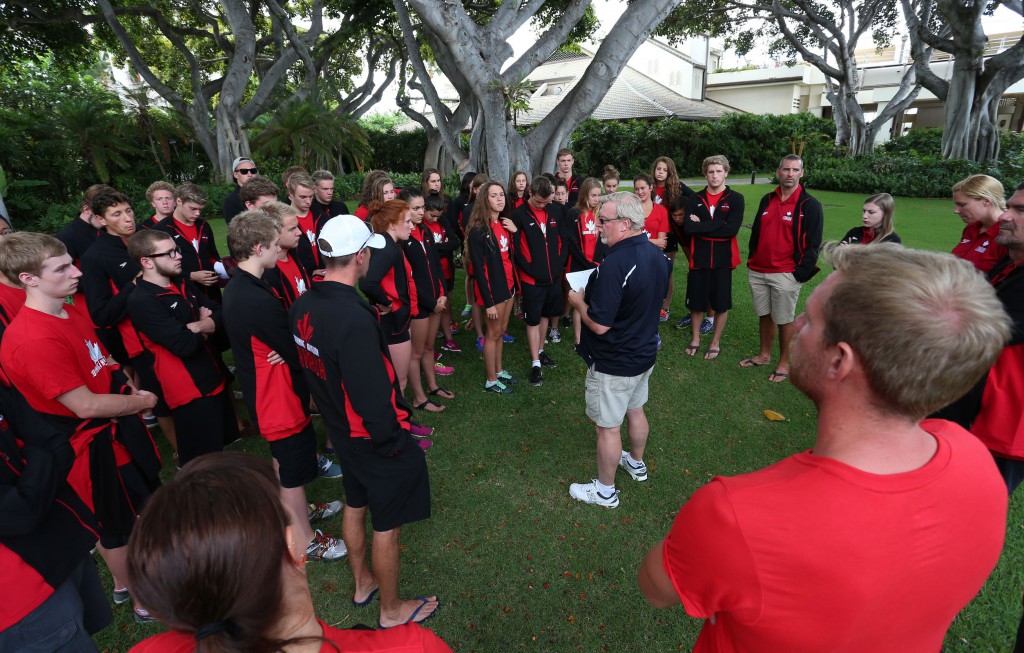
By Brian Palaschuk, Swimming World College Intern.
Swimming Canada’s Junior team is one of the most successful in the world. Despite a relatively small competitive swimming population of 35,000 year-round swimmers compared to the United States’ 355,000, the Canadian Junior team is extremely competitive. They finished second in the medal table at the 2017 World Junior Championships and top five in both 2015 and 2011. To get an inside look at Canada’s Junior success, Swimming World reached out to Swimming Canada’s National Junior Coach, Ken McKinnon.
About Ken McKinnon
Ken Mckinnon has been Canada’s National Junior Coach since 2009. His role with Swim Canada involves talent identification and development, coach development, and logistical management of the Canadian Development program. Under his leadership, Swimming Canada has produced 43 World Junior Championship medals, countless Junior Pan Pac medals, and has graduated many notable swimmers to international success, including the following 2017 Budapest medalists: Sydney Pickrem, Chantal Vanlandeghem, Penny Oleksiak, and Yuri Kisil.
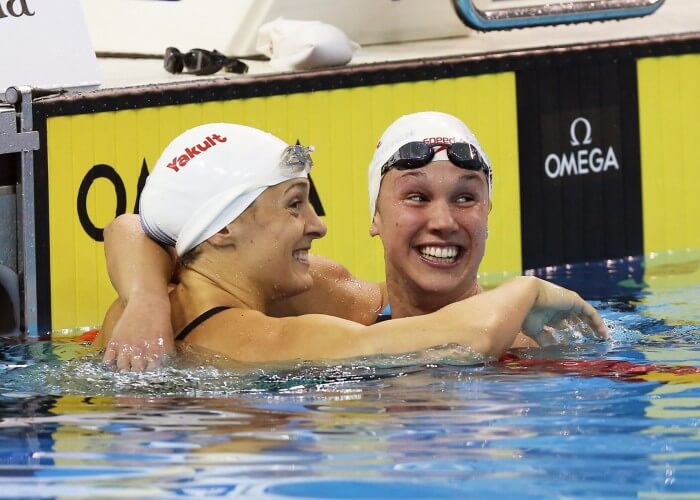
Photo Courtesy: Scott Grant/Swimming Canada
Swimming World: What are some highlights from Canada’s Junior program during your tenure as the coach?
McKinnon: My highlights include my first days on the job at the 2009 Jr Pan Pacs in Guam, and the 2011 World Junior Championships in Lima, where Canada finished third with 19 medals.
I also enjoy watching the success of junior team graduates like Sydney Pickrem, Yuri Kisil, Markus Thormeyer, Erika Seltenreich-Hodgson, Emily Overholt, Noemie Thomas, Brittany MacLean, Taylor Ruck, Penny Oleksiak, Kayla Sanchez, and Rebecca Smith.
Swimming World: Over the last decade, Canada’s National Junior Team has been one of the most successful in the world. They finished second in the medal table at the 2017 World Junior Championships. What do you attribute to this success?
McKinnon: This success is driven by athlete and club visitation and parent meetings, the budget to run dedicated camps and tours for junior-identified talent and their coaches, running dedicated staging camps for the World Juniors and Jr Pan Pacs, and improving the percentage of talented swimmers who remain in swimming.
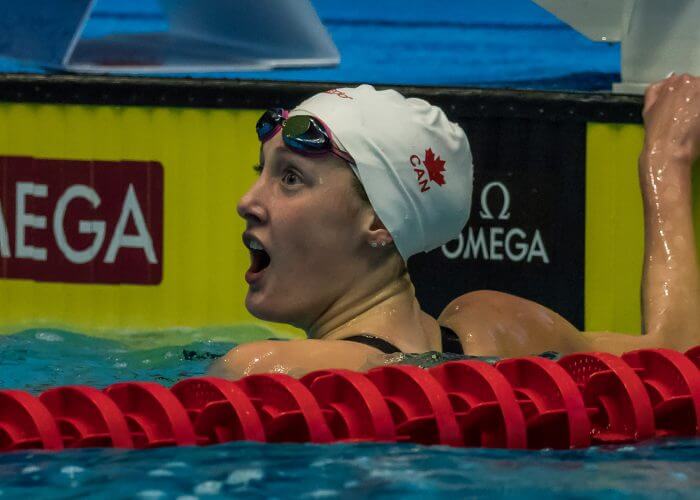
Photo Courtesy: Peter H. Bick
SW: What are some of your goals for the National Development Team heading toward the 2019 World Juniors and beyond?
McKinnon: This is our Program Goal Statement: “To provide Canada’s identified swimmers and their coaches the development opportunities to establish the will, attitude and skills required to race to the podium at the Senior International level.”
We aim to help guide the development of the athletes with the potential for high performance and their coaches, so that they are prepared to race into the finals of the competitions and ultimately to increase the number of final and semi-finalists in Tokyo 2020 and in Paris 2024.
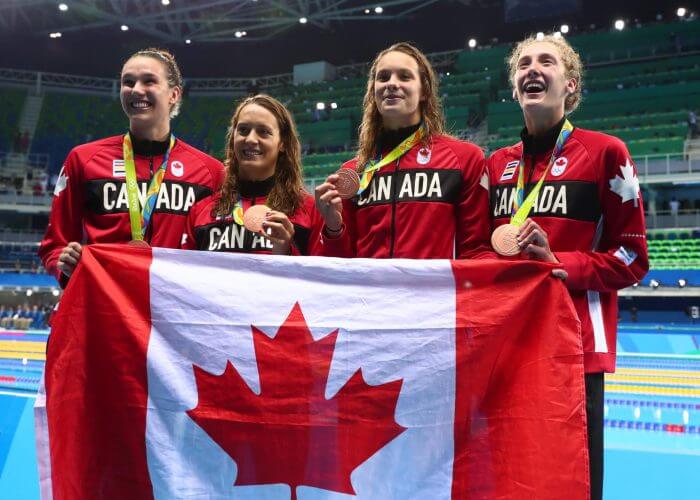
Photo Courtesy: Rob Schumacher-USA TODAY Sports
SW: What are some of the development initiatives Swimming Canada uses for the transitioning swimmers through the development program?
McKinnon: We use technical camps, which are camps consisting only of four to five of our very best athletes and their coaches. We expose them to a one-week training experience with one of the HP Centre programs and their entire staff and run a demanding video analysis exercise between the sessions, providing the coach and swimmer with technical solutions and video evidence.
We also expose identified athletes to World Cups and the Mare Nostrum Tour for international competitive experience while maintaining seasonal training. We have staging camps prior to major competition.
Finally, we use club visitation and coach development.
SW: Does Swimming Canada have any new development initiatives in the works for the upcoming years?
McKinnon: Our development aims for the future include the following: focusing more on male-only initiatives, increasing relay takeoff camps, more technical camps, and improving international in-season racing experience.
Additionally, we are teaching a new wave of athletes and their coaches the activation protocols and dryland and strength and conditioning protocols necessary for success in the modern swimming scene.
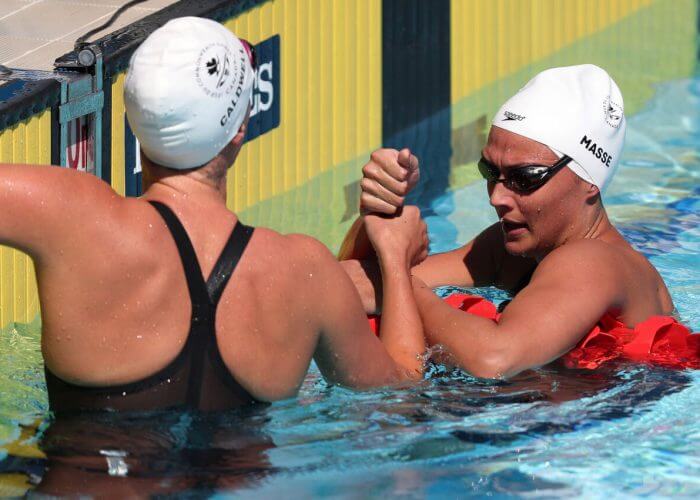
Photo Courtesy: Swimming Canada/Ian MacNicol
SW: As the National Development Coach, you do a lot of work with talent identification. This can be difficult with a country as geographically spread out as Canada. What strategies do you use to identify developing swimmers?
McKinnon: First, we use National Development Team program, “ID TEAMS”. This is a program that identifies top age group swimmers, starting at age 13 for females and 14 for male athletes.
Next, we use On Track Times. This is a system developed by Swimming Canada that uses 16th place times from Rio along with the mean age of finalists to set up a framework of development times for swimmers to remain “on track”.
These times are used to determine beneficiaries of Sport Canada Carding, Swimming Canada’s financial assistance program, which helps athletes to continue their development.
These initiatives are followed up with club visitation. We now have three other HP level coaches sharing the load of club visitation: Martyn Wilby (National Coach), Mark Perry (National Open Water Coach), and Iain McDonald (Next Gen Pathways manager).
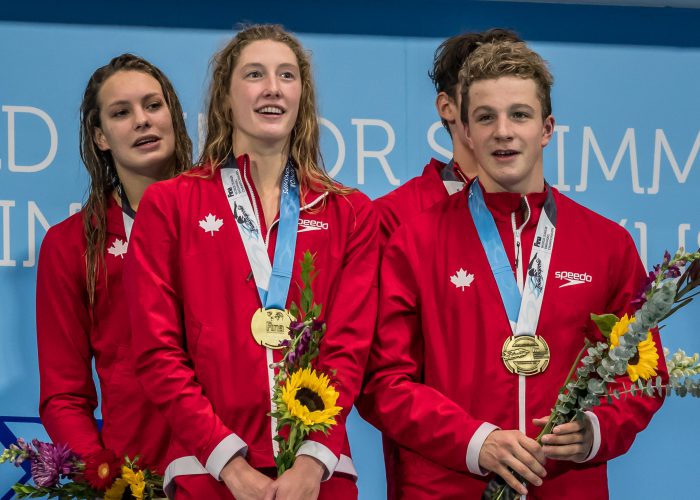
Photo Courtesy: Peter H. Bick
SW: Are there any up and coming Canadian swimmers that swim fans should look out for heading into the Olympics and beyond?
McKinnon: Josh Liendo smashed the 14-year-old Canadian record in the 100m fly last summer with a 54.76. He has since qualified to represent Canada at the Junior Pan Pacs and Youth Olympic Games, swimming a best time of 54.07 in the 100m fly at the Eastern Canadian Championships.
Swimming fans may already recognize Gabe Mastromatteo, as he was a member of Canada’s gold medal winning mixed medley relay at last summer’s World Juniors. Mastromatteo was also the youngest finalist in the men’s 50m breast. He swam new personal bests of 1:01.33 and 27.94 to qualify for the Junior Pan Pacs and Youth Olympic Games.
Alex Pratt went on a record breaking spree this December, taking down the 15-17 Canadian Age Group records in the 400, 800, and 1500 short course freestyles. Pratt qualified for Junior Pan Pacs and the Youth Olympics by rocking best times of 1:49.3 in the 200m free and 3:52.2 in the long course 400m free at Canadian Championships.
Kyla Leibel is another rising Canadian sprinter. While swimming fans were watching Ruck and Oleksiak at Commonwealth Games, 16-year-old Leibel blasted new best times of 55.95 in the 100m free and 25.59 in the 50 at Canadian Championships.
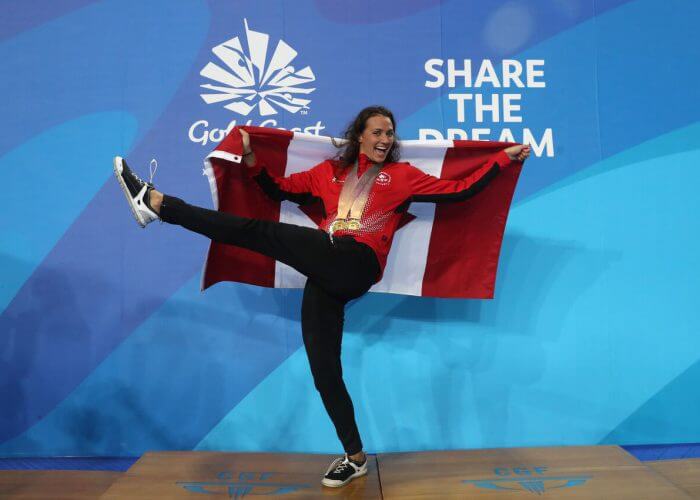
Photo Courtesy: Ian MacNicol
SW: This is a big summer for the Junior Team with both Youth Olympics and Junior Pan Pacs. What are your goals for the National Teams this summer?
McKinnon: Junior Pan Pacs is our major identified competition. We are looking for improvement between April selections and the competition, learning the National Team protocols and expectations, better execution of race tactics in big races and better individual performances on relays.
More information about Swimming Canada’s development team can be found at https://www.swimming.ca/en/.
All commentaries are the opinion of the author and do not necessarily reflect the views of Swimming World Magazine nor its staff.



